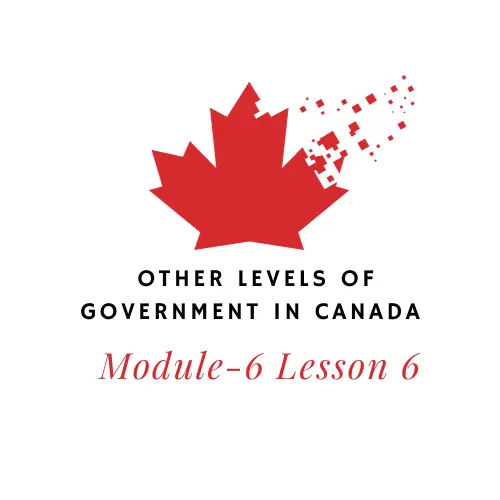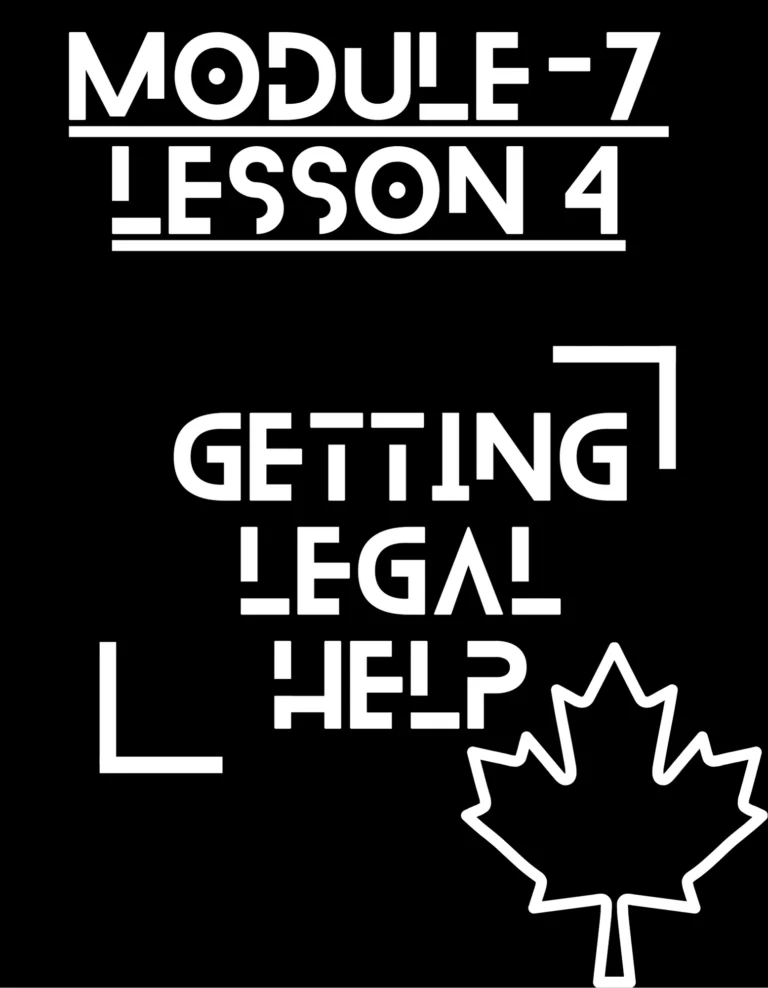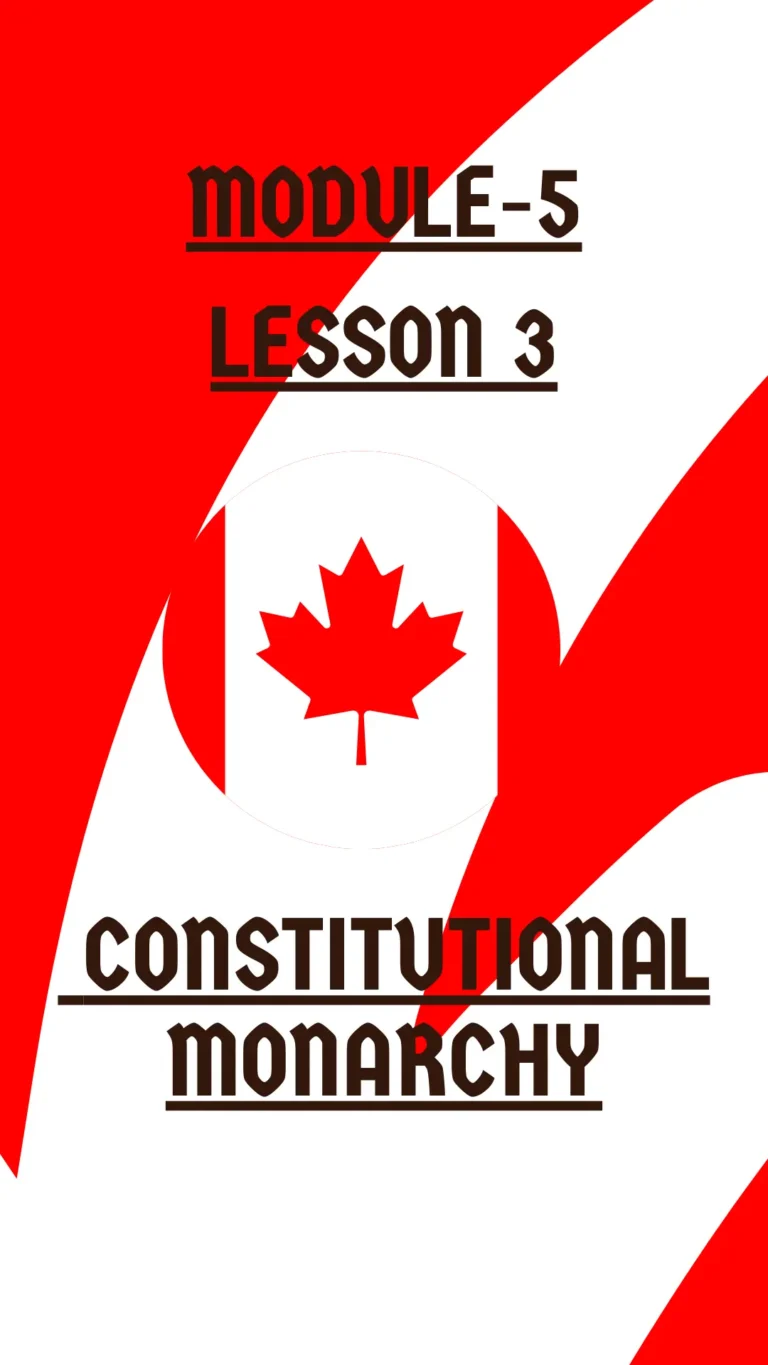Module-6 Lesson 6 Other levels of Government in Canada
Different levels of government play distinct but interconnected roles when it comes to shaping policies and services in the country. The federal government in Ottawa often gets the attention, but it’s important to acknowledge the importance of the other levels of government—provincial, territorial and municipal. The essay examines the functions, responsibilities and dynamics of the other levels of Canadian government, stressing the importance of decentralized administration in such a diverse and vast nation.
Provinces and Territories:
Framework Constitutional: Canada’s provinces, territories and federal government are all integral parts of Canada. Each has its own constitution. The distribution of powers between the federal government and the provinces and territories is outlined in the Constitution Act, 1867, and subsequent amendments. Education, healthcare, transportation, natural resources and other areas fall under the jurisdiction of provinces or territories.
Formulation of Policy and its Implementation: The provinces and territories are responsible for formulating policies that directly impact their citizens. It includes managing education services, regulating industry within its borders, and overseeing healthcare. This allows for a nuanced, responsive and more effective approach to government.
Health Care Delivery: The administration of health care is perhaps one of the provinces and territories’ most important responsibilities. Every province and territory is responsible for its own healthcare system. This includes hospitals, clinics and public health initiatives. Although universal health care is a principle that applies across Canada, specifics regarding delivery and funding may vary by region.
Management of Natural Resources: Provincial and territorial governments have authority to manage natural resources located within their borders. It includes decisions relating to the extraction of resources, regulations on environmental issues, and revenue generation. Canada’s diverse landscape, from oil-rich Alberta to forestry-dependent British Columbia, underscores how important it is to have regional autonomy when managing resources.
Canadian Legal System: Provincial and territorial governments have influence over the legal system in Canada. The provinces and territories are in charge of administering justice. This includes the creation of courts, the appointment of judges, and the regulation of the legal professions. It allows for legal diversity in accordance with local values and priorities.
Municipal Governments:
Local Government: Municipal government operates at the local level and addresses the needs and concerns specific to communities. Local services, such as parks and recreation, waste management, transportation and park maintenance, are their responsibility. Municipal governments are structured differently in different provinces to reflect the needs of rural and urban areas.
Planning and Development of Urban Areas: Municipalities are crucial in the planning and development of urban areas. The municipalities regulate land use and issue permits for building projects. Municipal decisions directly affect the residents’ quality of life, including housing, transportation and amenities.
Engagement in the Community: Municipalities often have direct dialog with their citizens. The community initiative, town hall meetings and public consultations foster a sense of democracy in local government, giving residents a voice on issues that directly affect them. The proximity of the local community increases accountability and responsiveness.
Services d’urgence: Municipalities lead the way in emergency response. Municipal governments are responsible for local police, fire and emergency medical departments. Emergency services can be tailored to meet the needs of each community, ensuring a quick and effective response in times of crisis.
Financial autonomy: Municipal governments receive some funding from the higher level of government but they can also raise money through user fees and property taxes. This allows the municipality to fund and prioritize projects according to local preferences and needs.
The interaction and collaboration of:
Relations intergouvernementales: Relationships between the different levels of government can be characterized as collaboration and negotiation. Discussions on healthcare funding, resource management and economic growth are part of interprovincial, as well as federal-provincial, relations. The Council of the Federation is a forum for intergovernmental collaboration. It is composed of premiers from provinces and territories.
Federalism: The term fiscal federalism is used to describe the division of resources between different levels of government. Transfer payments and equalization payments are all mechanisms to address the economic disparities among regions.
Responsibilities Shared: In some areas, there are shared responsibilities among the levels of government. Environmental protection, immigration, and Indigenous Affairs, for example, require the collaboration of federal, provincial and territorial authorities. The shared approach acknowledges that policy issues are interconnected.
Resolution of Conflict: Conflicts can arise due to different interpretations or priorities of constitutional power. Conflict resolution mechanisms, such as the courts and negotiations, can help to maintain a balance between central authority and regional autonomy.

Conclusion:
Canada’s government structure is an interplay between federal, provincial and territorial governments. Each of these contributes to the overall well-being of Canada. The federal government is responsible for providing a framework that unifies the nation and deals with issues of importance. However, decentralization ensures policies respond to diverse regional and local needs.
Canada’s democracy is strengthened and resilient by the constitutional framework, service delivery, policy development, and implementation at various levels of government. Collaboration, fiscal federalism and shared responsibilities highlight the interconnectedness between these levels. They reinforce the idea that good governance is dependent on a balance of power and responsibility. The synergy of Canada’s diverse levels is crucial to tackling complex challenges and creating a vibrant and cohesive nation.





